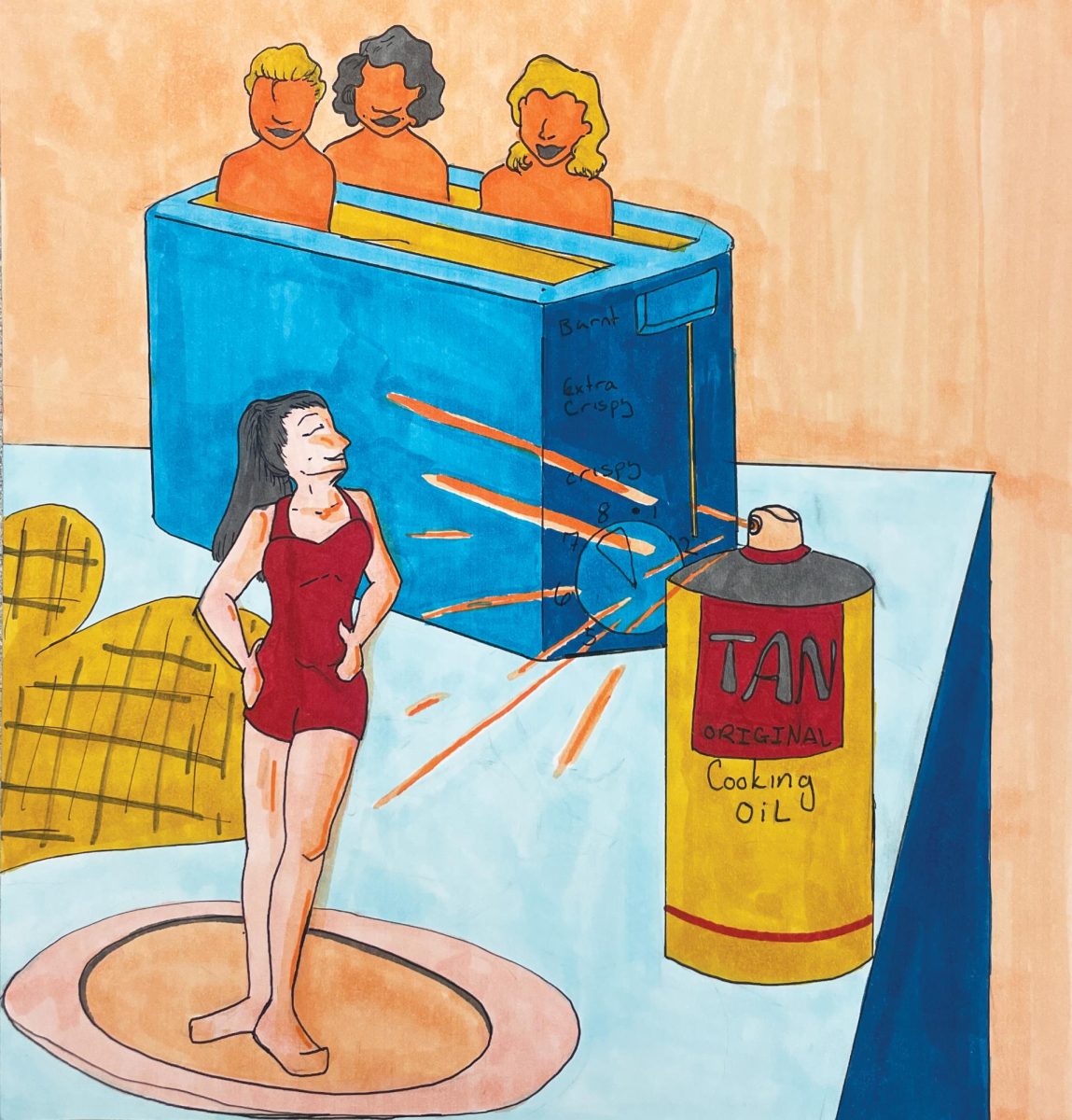With our shortened attention spans and need for instant gratification, many people who enjoy tanning have turned to unhealthy alternatives in order to achieve a summer glow in a matter of minutes compared to sitting outside for extended amounts of time protected by SPF.
Some of these methods include using tanning oils, going to the tanning beds and even getting an artificial tan such as a spray tan or using an at home mousse.
Regardless of the method, it is easy to see that tanning has become an obsession for many people. However, there is a huge issue at hand when it comes to tanning and the risks that can come with it.
Tanning beds pose serious health risks due to their use of ultraviolet (UV) rays, making cancer-causing skin damage more likely for users.
There are many tanning salons solely dedicated to tanning beds. At different gyms, there are also upgraded memberships that include access to tanning beds.
According to familydoctor.org, “People who use tanning beds are at a much greater risk for developing skin cancer.
Some reports estimate that the risk increases significantly for people who use a tanning bed before the age of 35.
Your risk of melanoma is higher if you started indoor tanning while you were a teen or young adult.” Skin cancers such as melanoma can be extremely dangerous and even life threatening in severe cases.
The CDC states that too much exposure to UV rays is the leading cause of skin cancers today.
Another common way that people receive too much UV ray exposure is by using tanning oils. Many brands market these oils to show that they include SPF, making it seem like they are safer than they actually are.
In an article by byrdie.com, dermatologist Debra Jailman writes, “tanning oils contain very little SPF compared to a product labeled as a sunscreen lotion, which actually provides protection from the sun’s rays.”
It is common for people to spray on a thin layer of sunscreen, followed up by a douse of tanning oils. They may think they are protecting themselves while still getting their tan on quickly, however, it is not so easy to cheat the system.
Developing skin cancer can be painful and life threatening for many people. Skin cancer can be caught early on and be treated safely. But, for people with darker skin tones, skin cancer may be harder to spot and therefore harder to treat. It is still possible to get a tan without frying your skin, although it may not be all that natural.
A method that many turn to in the colder months when the UV is not as high is self-tanning with a mousse and mitt at home or getting a spray tan. Again, while it may not look all that natural, these methods pose little to no risk to the development of skin cancer as long as sunscreen is used over it when in the sun.
If you still prefer laying out and getting some vitamin D, it is of the utmost importance that sunscreen is used.
No matter how tempting getting an “initial burn” may be and saying, “it will turn into a tan,” the risk of skin cancer is a serious and real consequence that should not be taken lightly.
Different tanning methods cause skin damage, cancer
Due to the harm that UV rays can cause, tanning methods such as beds and oils can cause severe skin damage. Artificial alternatives such as self and spray tans may be safer
0
More to Discover
About the Contributor

Lauren Fisher, Social Media Editor









